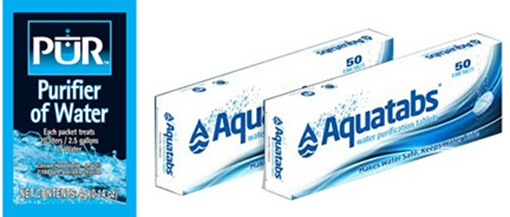5.3 Creating demand for better WASH services
The second pillar is about creating demand for WASH services through maximising the availability and efficient use of human and financial resources. Let us first look at the meaning of demand. You have probably come across the term before. Demand is a concept of economics that is frequently mentioned with supply. From a practical point of view, demand and supply are complementary. Simply put, demand is a strong need or desire for a certain commodity or service. It refers to how much (quantity) of a product or service is desired by users. Supply, on the other hand, refers to how a product or service can be provided to meet the expressed demand.
Accordingly, ‘demand creation’ is a process whereby the unrealised need of people for a certain commodity or service is converted to an expressed demand. To give an example, in Ethiopia the use of household water treatment chemicals, was not common in the past (Figure 5.3). However, after many years of activities to raise awareness of the importance of these chemicals in preventing waterborne diseases, more and more families are using them. Particularly during the 2006 acute watery diarrhoea epidemic in some parts of the country, the need for water treatment chemicals increased dramatically, resulting in a rapid rise in price that in some places even tripled. The demand had been created and nowadays these chemicals are commonly seen in shops.

Demand creation as a process requires systematic, targeted and continuous communication and engagement with the people in whom we are aiming to create demand. Let’s consider another practical example. In Ethiopia, many rural communities have been provided with a safe water supply that is close to their homes and available at all times of the day. However, it has been observed that the amount of water used remained the same as it had been in the past when people had to travel many hours every day and spend even more time queuing for water that was of very poor quality. This observation suggested that, regardless of the new water supply, people were still only using water for the same purposes as before, i.e. cooking and drinking.
Pause for a moment and analyse this practical case. What do you think were the reasons for communities using the same amount of water both before and after they were provided with a safe, adequate and accessible water supply? What were the main factors that prevented community members from using more water? Do you think they should use more water for purposes other than drinking and cooking? What actions could you take to encourage people to use more water?
Generally, demand for a product or service comes from the knowledge, awareness and belief of its value(s) to those involved. From this basic fact, we can deduce that the reason why community members continued to use the same amount of water is mainly associated with low awareness of the benefits of using water for hygienic purposes. In other words, the community members were not well aware of the importance of personal hygiene in preventing communicable diseases such as diarrhoea, intestinal parasitic infection, trachoma, scabies, jigger flea infestation, and many other hygiene-related diseases. They were not using as much water as they needed for adequate washing to prevent these diseases. If you come across such a case, your action should focus on creating the demand for more water use and the best way to do this would be by raising awareness through hygiene education.
As you can see from Box 5.1, the wording for this pillar in the OWNP document clearly states that the main mechanism to be applied in creating demand for better WASH services is maximising availability and the efficient use of human and financial resources. This implies that if there are sufficient numbers of trained people and sufficient funds, it is possible to carry out continuous and systematic WASH awareness-raising interventions in a given community. In this way, the demand for new or improved WASH services can be created.
The OWNP document emphasises the efficient use of resources (human and financial) rather than the mere availability of them. According to the programme document, the need to focus on efficiency came out of consultation with regional WASH bureaus and cities during the programme formulation. In this regard, the programme document states ‘during consultations with the regions and cities, human resources and capacity were mentioned more frequently than funding and other resources as constraints to effective implementation of WASH activities on the ground.’ (OWNP, 2013). This recognition of the importance of human resources for the successful implementation of the OWNP leads us to the third pillar.
5.2.2 Good governance
